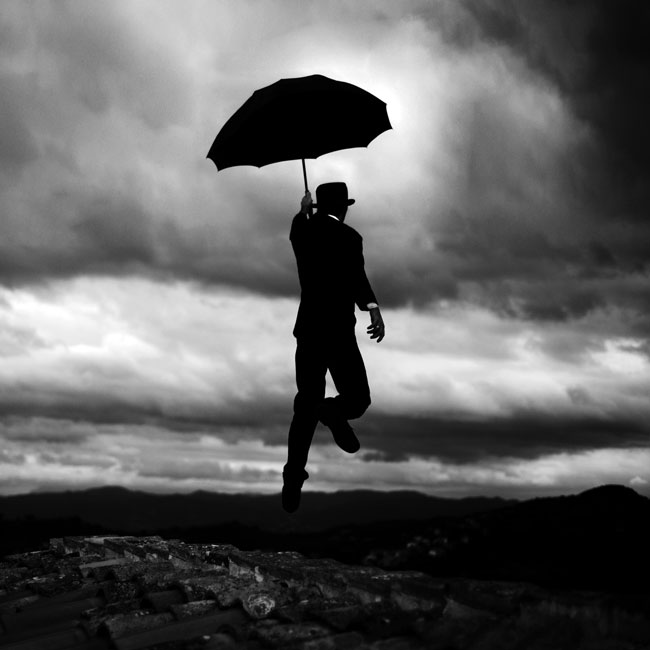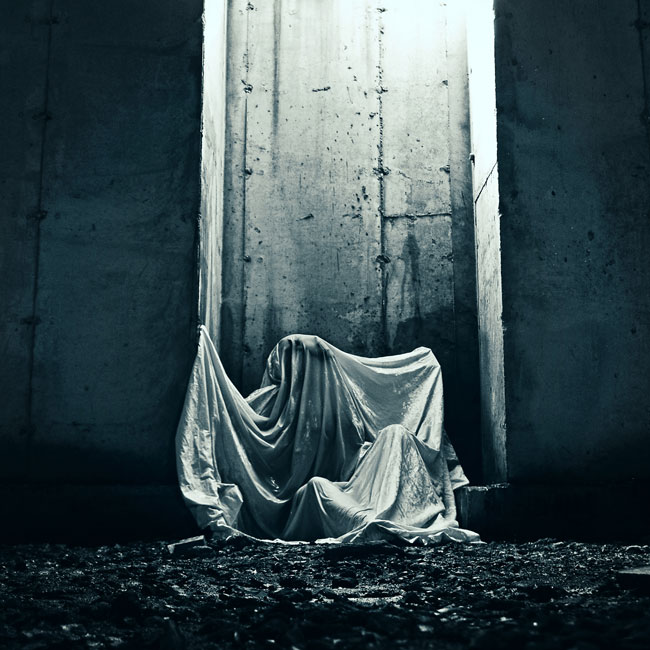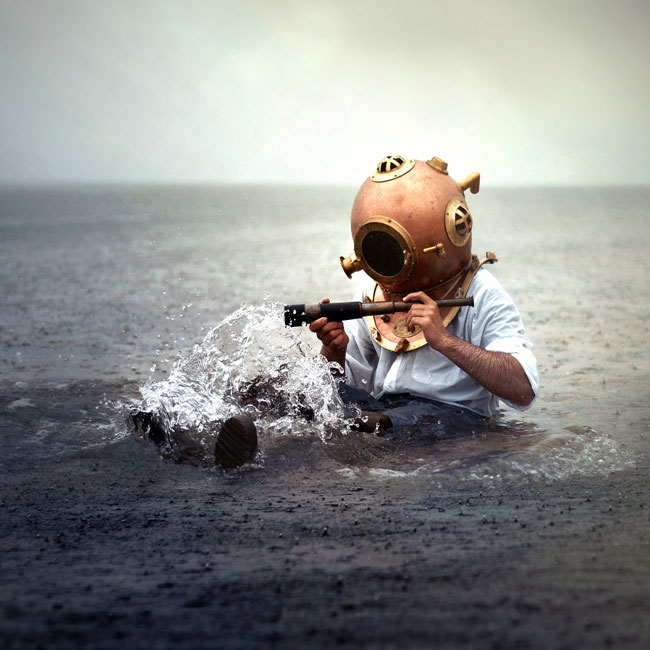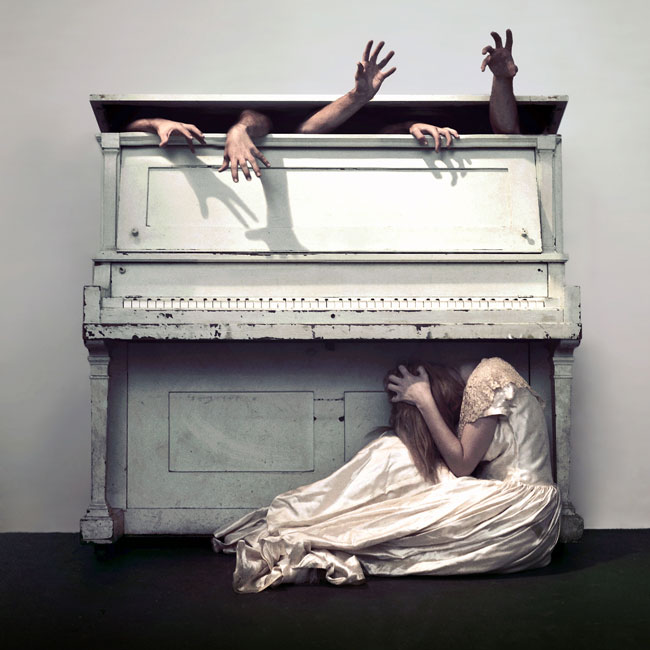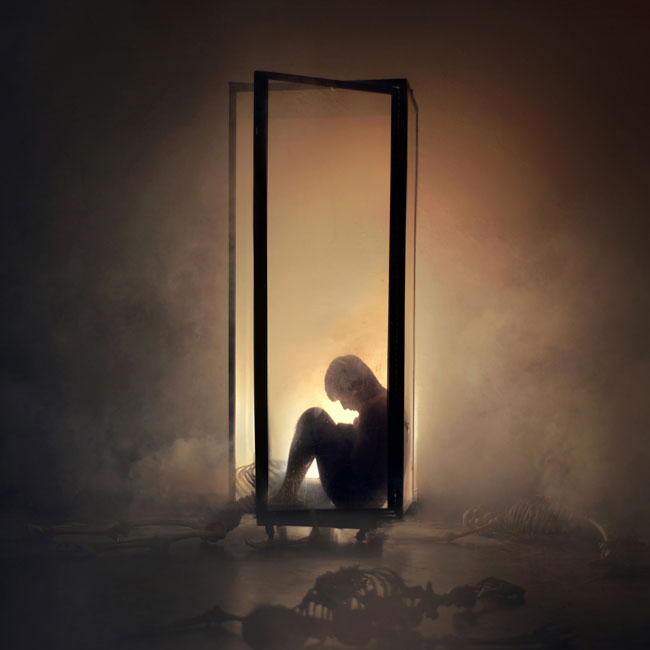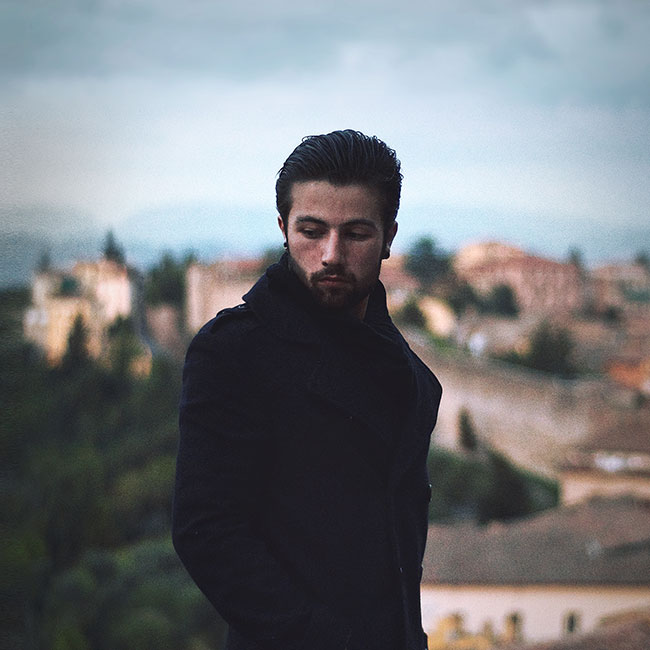Troubled Sleep: Nicolas Bruno's Dream Journal Images
Nicolas took this photo at an abandoned construction site. "It had a really cool lighting situation going on with the light coming through the edges of the foundation. I looked through my dream journal at all the faceless figures I was seeing, and the fact that I feel as though I'm drowning sometimes, and I wanted to express that by having my character underneath the water-soaked bedsheets." D60, AF-S DX Zoom-NIKKOR 18-55mm f/3.5-5.6G ED II, 1/2500 second, f/5.6, ISO 100, manual exposure, Matrix metering.
For most of us, photography is a means of expression, and it is surely that for Nicolas Bruno. But more importantly for him, it's also a means of therapy and vital communication.
Nicolas has for eight years suffered from sleep paralysis, a condition during which he is fully conscious but unable to move. It can last several minutes, but what's particularly frightening is that in Nicolas's case it's accompanied by vivid, disturbing dreams and hallucinations. Awake and aware, but not able to move or speak, he could only "go through the dream" until it ended. There was no way for him to explain what he was seeing during these episodes, which lasted five to ten minutes but seemed like an hour. "I was feeling alone in my own head," he says. "I had no way to really talk about it."
But he could show it. "I was always interested in art, and I used to draw and sketch all the time," he says, and so he began to keep a dream journal in which he would make sketches and take a few notes. "I took those sketches and turned them into images. That's how I found my voice."
The images were, he says, "a universal language" he could use to tell his story. "I could show them to anybody across the world, and they might be able to relate in their own way. That was my way of finding therapy and also communicating my struggles to other people."
One of Nicolas's image expansion photos. "A lot of the characters I see often replicate the way Magritte renders his characters—a big black silhouette, maybe a suit and a hat. I was playing on the fact that they levitate through the room [within] the dream experience. This is almost a comical representation of it, though there's definitely a darker element to it." D600, AF NIKKOR 50mm f/1.8D, 1/2000 second, f/2, ISO 100, manual exposure, Matrix metering.
Degrees of Control
"Photography is a medium where you are able to combine rational thought with wild imagination," Nicolas has written. His photography is all of that, and also a way of regaining control of the narrative of his sleep paralysis experiences. The visions are out of his control, but in his realized images he can communicate what he sees and try to express what he feels.
"I have absolutely no control in these dreams," he says, "but once I wake up and go out and photograph, I finally have that control. I can show what's it like. I have the ability to reenact what I've experienced, and I have a tangible photograph at the end of my process. It's my way of regaining my control after having no ability to move around or interact with the figures that I see in the dreams."
"This beach is a place from my childhood—I used to bring my dog there all the time. It ties into things I've seen in the sleep paralysis dreams [and] the feeling of being lost and trying to figure out where I am." D600, AF NIKKOR 50mm f/1.8D, 1/40 second, f/2.8, ISO 100, manual exposure, Matrix metering.
The Photographic Process
The people in his photographs—his "characters"—are most often portrayed by him, and in the early days of his photography when he shot with a D60, he used a remote release to place himself in the scenes. Later, with a D600, and now a D810, the built-in interval timer allowed him to appear in two or more places at once. "It's a lifesaver—I'll throw in a huge blank memory card and let the camera shoot while I’m doing all my setups."
As his tripod-mounted camera takes images at predetermined intervals, Nicolas moves from position to position within the scene. In Photoshop he combines the frames.
"I'll use a shallow depth of field most of the time, and before I start modeling I'll put a stick or a piece of equipment where I want to be—where my main character will be—and I'll focus to that spot and make a physical bracket of where to be and where not to be." He likens it to walking a tightrope: "I can walk within this plane and I'll be sharp. Sometimes if I'm running as a character, I'll have to step back and forth a few times to make sure I’m in focus. The main thing is to keep the camera in the exact same spot so the composites layer perfectly."
The preset intervals vary depending on how fast he's moving. "If the characters are stationary, I don't have to worry about it, I just adjust myself a tiny little bit while the camera is shooting its intervals—say, an image every four seconds. If I'm using a smoke effect, I'll shoot rapidly for maybe 25 images."
Sometimes he'll use an image expansion technique. With the camera on the tripod, and using the interval timer, he'll capture a situational image of himself. Then he'll move the camera up and down, left and right, taking a shot of the empty scene each time. "I'll stitch those shots together to make the background and then put myself into that bigger landscape." The technique allows him to manipulate his size within the image.
"I know the feeling of sitting at your instrument and not being able to express what you're trying to express, and I'm using that as a symbol of the fact that I couldn't really speak of these dreams." D600, AF NIKKOR 50mm f/1.8D, 1/250 second, f/2, ISO 100, manual exposure, Matrix metering.
If the photograph depicts his character being constrained, he'll need someone with him to trip the shutter. "I always want the people who come with me to be part of my family or my best friends," he says. "They understand what I'm doing—and the situations are kind of weird."
So are some of his props. "When I'm making these pictures and putting them out there, I get e-mail from people who have objects in their homes that they want to see repurposed." When someone offered to send him a diving helmet, Nicolas bought it. "I knew I'd want to keep it," he says. He'll reach out on social media, too. "Does anyone have a grandfather clock? Sure enough, someone had one about to be thrown out."
The search for props will take him to antique stores and thrift shops, and on trash pickup days he’ll drive around his neighborhood to see what's being thrown away that he can use. In the woods near his college, he once found a bathtub. "I dragged that thing through the woods, over a stream and up a hill. Totally worth it."
"At college they had this drawing academy area, with cases of things they'd draw. After looking at my journal I thought of replacing this case's skeleton with myself to replicate the fact that I’m trapped within my own little bubble, leaking out all this information through my photographs. I used a fog machine and a construction light for the composite." D600, AF NIKKOR 50mm f/1.8D, 1/250 second, f/2, ISO 100, manual exposure, Matrix metering.
Beyond Documentary
Many of the Nicolas's photographs recreate what he's seen in moments of sleep paralysis; others add another level, a strong element of art beyond the document. "I was an art history minor in college," Nicolas says, "and I saw how painters constructed their work, how they positioned figures within the frame to create their compositions."
Often a location, a prop or a mood might trigger a memory, and he'll go to his dream journal to see if he can track where it comes from. He'll often go out with the journal and see if he can match a sketch or some notes to a location. "I'm either going out with my journal to find a place, or I'll take a note and replicate one dream instance, or I'll combine multiples or create something new."
Some photos are not literal dream situations. "The basic subject matter does not change from my dreams," Nicolas says, "but I'm using dream symbolism, too: different contexts of emerging from the realm of sleep: bodies of water from which characters are emerging or submerging; ladders as avenues of escape."
You'll see some of these symbolic devices in the photos here. Many more of Nicolas's compelling sleep paralysis images are at his website, nicolasbrunophotography.com; at instagram; and at Flickr.
Taken while Nicolas was doing an independent photo study in Italy, this self-portrait resulted from his search for images in an olive grove. "It was getting dark and I was rather lost, so I figured I might as well take advantage of the situation to make a photograph about being alone in an unknown place." D600, AF NIKKOR 50mm f/1.8D, 1/20 second, f/1.8, ISO 100, manual exposure, Matrix metering.

